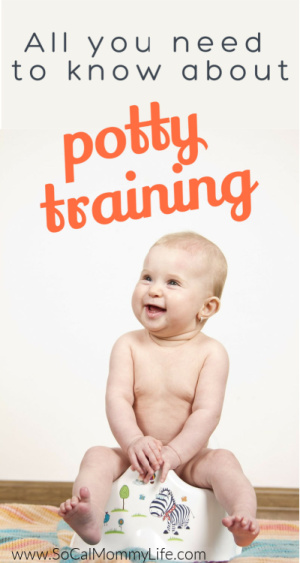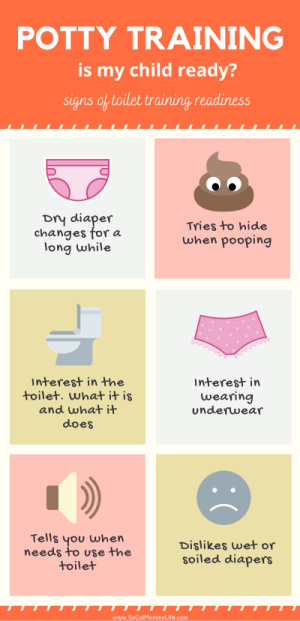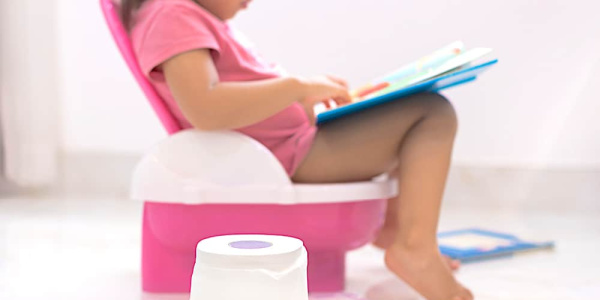Are you ready to ditch that diaper bag? Has your child’s daycare set a deadline to potty training? Do you want to save money by not buying diapers anymore?
The frustrating journey of toilet training a child is a struggle every parent faces, especially if the child is not toilet trained after 2 years-old. We moms often find ourselves paying too much attention to whether our child is behind his peers, potty training included. We start to panic as soon as there is some sign of “lagging behind.”
I didn’t start potty training Baby Chunbao until he was 2.5 years-old because he wasn’t showing any signs of readiness until then.
After doing my own reach, reading up on potty training books, consulting with Baby Chunbao’s therapists, and daycare teachers, I realized that there is no one-size-fits-all solution. There are plenty of potty training methods out there such as the ” 3-day potty training” and”rewards method”, but they may not work for every child.
However, there are a few underlying principles to successful potty training. Keep reading to find out how to clear the way for your child’s eventual mastery in potty learning!

This post may contain affiliate links, which means I’ll receive a commission if you purchase through my link, at no extra cost to you. Please read full disclosure here.
When should I start potty training my child?
There is no hard- stop date on when potty training should begin. Different cultures have different perspectives on when this journey should start. In my culture, parents, including my mom-in-law “potty train” their kids as early as 6 months teaching them how to poop or pee on a pile of newspapers!
While this may work for some kids, the AAFP recommends that training being after 18 months old using a potty-chair AND parents assess readiness by looking for signs that suggest interest in toilet training.
Signs of potty training readiness
Before start potty training your child, make sure that she is showing signs of potty training readiness. Potty training before a child is ready can backfire on your efforts. It may also take longer for a child to be potty trained if she is not ready yet. If your child is showing most of the signs below, then she is ready to be potty trained!
- Interest in the toilet (what it does, how it works) or follows others such as mom or dad when using the toilet
- Dry diaper changes or stays dry for a long while. Mostly wet or dirty diapers after meals
- Tries to hide when the child is having a bowel movement
- Dislikes having wet or soiled diapers
- Wants to stand instead of sit after a bowel movement
- Interest in wearing underwear
- Is able to verbally tell you when needs to use the toilet. Or, able to let you know if she has a wet or soiled diaper
- Tries to have a bowel movement in the same spot most days

What you need to get started with potty training
Choose the right timing
Before you start the journey of potty training, make sure that there is no disruption to your family’s daily schedule. This means no travel, no major life events such as moving, changing schools, or the birth of a sibling. Potty training is a delicate process so assist your child by providing him the necessary support.
Loose fitting clothes
Your child needs loose-fitting clothes that can be pulled up and down, taken off, and put on by your child. The desire to use the toilet stems from a need to be independent, so giving your child practical clothes reduces frustration in this process.
Avoid clothing that gets in the way of using the toilet, such as overalls, onesies, any clothing with snaps or buttons, and dresses/skirts that may get in the way when using the toilet.
Cute cotton training pants
Encourage your child to wear cotton training pants. Pull-ups may sound like a great idea but technically, they are still diapers. They wick away moisture so effectively that they discourage a child from remembering to urinate in the toilet. Having your child wear pull-ups may confuse or delay toilet learning. So, stick with cotton underwear and be ready to wash them when accidents happen!
You can also buy training pants that have the designs your child likes. This will spark their interest and have less resistance in wearing them. Baby Chunbao is infatuated with Cars, so got him Cars underwear and he wears them without a fuss.
Potty training seat
Having a potty training seat that your child likes is key to successful potty training. Other than for safety reasons, a potty training seat will allow your child to gain confidence when using the bathroom as a beginner.
There are 3 main types of potty training seat and you may have to experience a few to find the one your child accepts.
The realistic potty training toilet looks and feels like an adult toilet. Some even makes flushing sound! This kind of potty training toilet will make kids feel more secure because it is lower and their feet is on the ground. Due to it’s realistic appearance, it may build confidence when transition to the real thing.
The downside is that this kind of potty training toilet tends to be on the smaller side. So, I don’t recommend it for potty training older or bigger kids. Make sure you check the dimensions of the toilet before you make the purchase.
Another popular type of potty training seat is a seat with step stool attached. Your baby can step up and hold on to the toilet, which promotes independence.
Although sturdy in design, the seat with step stool can be bulky and hard to transport.
The soft potty training seat is also loved by parents. The portable design is great for on-the-go potty training and they come with all sorts of cute designs.
Since this is a seat that you place on top of the toilet, your child may dislike not be able to feel the floor when doing his business. You may need to place a step stool for him to feel more secure.
Tips for successful potty training
Tip #1: Ask your child to use the toilet often
Try to choose an inviting time period such as after a meal, around 10 am, after a nap, or before the shower. No matter which time you choose, your child should feel comfortable and relaxed sitting on the toilet.
Also, invite your child to go to the bathroom without making it sound like a command. Rather than ask a yes/no question like, “Do you need to go potty?” try a brief statement, “Let’s go try the toilet“, or “I see that you’re awake; let’s go to the bathroom.”
Even if your child doesn’t want to use the toilet, simply remind and encourage. It is normal for anyone, even adults, to be out of the comfort zone. But as a parent, our task is to encourage and ensure that there is nothing to be afraid of when it comes to trying something new.
Try to avoid forcing your child to be on the toilet if she resists, as this is a delicate time in your child’s growth toward independence!
Offering limited choices can also be effective, “Do you want to go to the toilet now, or after you’ve put your socks on?”
Tip #2: Grasp the perfect time to use the toilet
Seizing the moment when your child wants to pee or poop is a major stepping stone for training to use the toilet. For example, when the child wakes in the morning or from the nap, and the diaper is dry, this is the perfect time to toilet train.
Also, if your child has a regular bowel movement around the same time each day, this is a great opportunity to bring your child to use the potty. Baby Chunbao almost always poops around 9:30 am so he learned how to poop in the toilet before he knows how to pee!
Tip #3: Give your child the power of control
We may think that it’s our job to “toilet train” our kids, that we are the ones in charge of this important transition in our kid’s lives. However, since most kids give up their diaper during their toddler years – a time when they are programmed to balk at our ideas – it can be helpful to shift our thinking from “toilet training” to “toilet learning” in which kids are the ones taking the lead.
As much as you can, set your anxiety aside, avoid pushing, and let your child set the pace. Have your child choose her underwear, pull down her pants, let her flush the toilet are all examples that provide your child the needed independence.
Tip #4: Avoid using derogatory comments
Elimination is a natural part of life, so avoid discussing toileting with any derogatory comments, such as “Eww, it stinks,” or “You made such a big mess!”
It is also important to refrain from using terms like “good” and “bad” and to avoid showing anger or disappointment over a “wet event.”
Try to use mildly positive, factual observations like, “You have been dry the whole day” or “You’re using the toilet just like Mom and Dad!”
Tip #5: Focus on potty in the toilet
The toilet is not a place for playing, socializing, reading books, etc. The longer you linger, the more your child might lose focus as to why she is there.
At the beginning of potty training, you can sing a song or talk to your child if he fusses. But, if he continues to get agitated, put him down and assure him it’s ok if he doesn’t want to try the toilet.
Tip #6: Be a model to your child
Your child wants to be like you! Modeling the toilet at home will help your child feel more comfortable when he is ready for this natural part of life. Baby Chunbao followed me to the bathroom sometimes and one day during potty training, he tears a bathroom tissue and pretends to wipe himself (even though he doesn’t need to) and flush it down the toilet!
The last thing you need to know about potty training
Know when your child is ready for potty training along with having the right gears and being a facilitator rather than a “trainer” are the keys to successful toilet training.
Remember to always finish with hand washing, as this will instill a healthy habit once your child is toileting independently. If your child refuses to use the toilet, avoid a power struggle, and try another time. Patience and understanding go a long way, and consistency without pressure will help your child achieve success!
Have a question? Leave a comment below!




